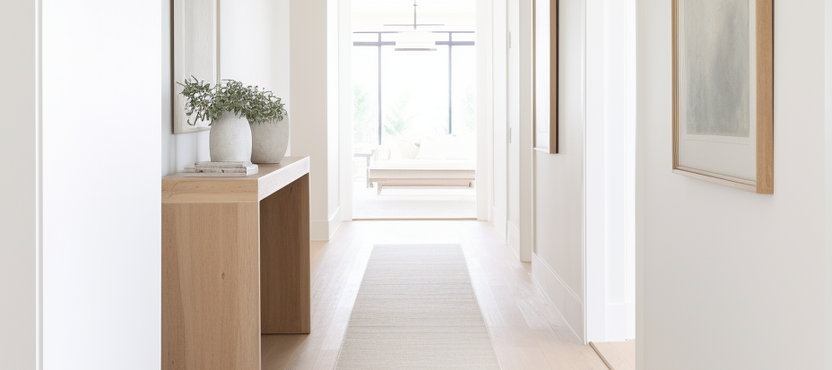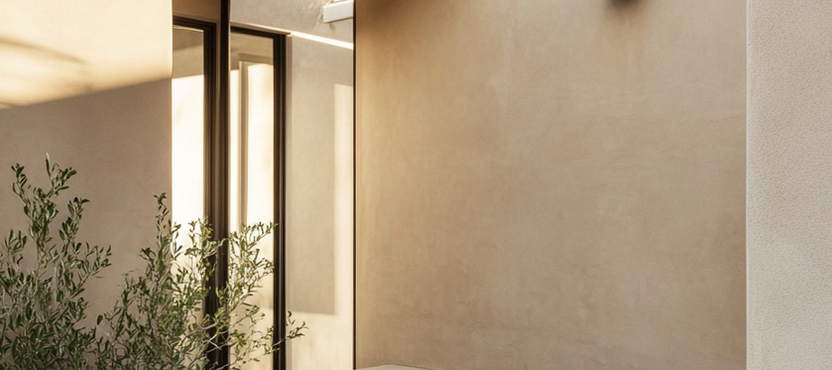Mixing Furniture Styles? Here’s How to Nail That Effortlessly Eclectic Look
- Beril Yilmaz

- Jan 27
- 5 min read
When it comes to designing a space that feels dynamic, personal, and downright cool, there’s no better strategy than mixing furniture styles. Combining pieces from different eras, aesthetics, and design philosophies not only creates visual interest but also tells a story about your personality and design preferences. The eclectic look is growing in popularity for its ability to blend old and new, formal and casual, bold and understated — all while feeling cohesive and intentional.
While the idea of mixing furniture styles might sound daunting, especially if you’re not a professional designer, it’s a surprisingly approachable way to refresh your interiors. A mid-century sideboard with a traditional armchair, a minimalist coffee table paired with a vintage rug — these pairings can elevate your space to look curated and unique rather than overly coordinated or stale. The key lies in understanding a few basic principles that will help you mix and match effortlessly.
Whether you’re redecorating a single room or revamping your entire home, this guide will provide you with practical tips for blending furniture styles with confidence. Ready to embrace a more layered and inviting look? Keep reading for actionable advice on how to master the art of mixing furniture styles in your home.
1. Mixing Furniture Styles: Set the Tone with a Clear Vision

Before diving into furniture shopping or rearranging your space, establish a clear vision for how you want your home to feel. Are you drawn to a cozy and nostalgic vibe, or do you prefer a sleek and modern aesthetic? Knowing your overarching style goal will help you make better decisions when selecting and pairing furniture.
Ideas to Consider:
Create a Mood Board: Collect images of rooms, furniture pieces, and textures that resonate with you. Look for common themes, like specific colors or shapes, to identify what appeals to your style.
Identify a Style Foundation: Even if you’re blending multiple aesthetics, decide on one style to take the lead in your space. For example, a Scandinavian-inspired base can support eclectic vintage accents.
Think About Function: While aesthetics are important, consider how the room will be used. This can help guide your furniture choices toward pieces that balance beauty and practicality.
2. Mixing Furniture Styles: Play with Proportions and Scale

Blending furniture styles works best when there’s a thoughtful mix of shapes, sizes, and proportions in a room. Balancing large, bold pieces with smaller, delicate items prevents any single style from overwhelming the space.
Ideas to Try:
Vary Heights: Pair a low, minimalist sofa with tall, dramatic floor lamps or a statement bookshelf to create visual contrast.
Mix Heavy and Light Furniture: Balance a chunky, rustic dining table with slim, modern chairs. Alternatively, offset a large sectional with delicate side tables.
Pay Attention to Negative Space: Allow breathing room between furniture to avoid a cluttered feel and highlight individual pieces.
3. Mixing Furniture Styles: Let Color Be Your Unifying Element

Color is one of the most effective ways to create cohesion in a room with mixed furniture styles. A consistent color palette can tie together seemingly unrelated pieces and give the space a harmonious look.
Ideas to Try:
Choose a Neutral Base: Stick to a palette of whites, grays, or beiges as the foundation, then layer in pops of color through accent furniture or décor.
Use Repetition: Repeat a key color in various elements — think navy blue throw pillows, a matching side table, and wall art with blue accents.
Incorporate Textiles: Rugs, curtains, and cushions are great tools for introducing or reinforcing a color palette across different furniture styles.
4. Mixing Furniture Styles: Contrast Materials for Depth

One of the secrets to successfully mixing furniture styles is creating contrast between materials. Different textures and finishes add layers of depth to your space and make it visually more engaging.
Ideas to Try:
Blend Natural and Polished Finishes: Combine raw wood pieces with sleek metals or glossy lacquer for an appealing contrast.
Experiment with Soft and Hard Textures: Pair plush upholstered seating with angular, industrial coffee tables or vintage leather chairs with smooth marble side tables.
Layer in Unexpected Materials: Don’t be afraid to mix glass, wicker, stone, or even acrylic for a more eclectic vibe.
5. Mixing Furniture Styles: Use Décor and Accessories as Anchors

Smaller elements like lighting, artwork, and accessories can bring cohesion to a room filled with mixed furniture styles. These accents can act as bridges between different aesthetics, tying the space together.
Ideas to Try:
Statement Lighting: A modern chandelier or vintage pendant light can serve as a focal point and complement various styles in the room.
Layered Artwork: Use a gallery wall to incorporate different art styles while sticking to a unified color palette or framing style.
Textile Blends: Layer throw blankets, pillows, or rugs in complementary patterns or textures to balance diverse furniture.
6. Mixing Furniture Styles: Start Small if You’re Unsure

If you’re hesitant to mix furniture styles, ease into the concept with a smaller room or subtle touches. Experimenting in a low-pressure space can build your confidence before tackling a larger project.
Ideas to Try:
The Entryway: Blend a modern console table with a traditional mirror and a woven basket for storage.
Guest Bedroom: Pair a contemporary bed frame with a vintage nightstand and colorful textiles for an eclectic touch.
Reading Nook: Place a mid-century armchair next to a sleek side table and an industrial floor lamp to test out mixing styles.
7. Mixing Furniture Styles: Trust Your Instincts

At the end of the day, your home should reflect your personality and preferences. While design principles are helpful, there’s no wrong way to mix furniture styles if it feels authentic to you. Trust your instincts and don’t be afraid to take risks.
Final Thoughts:
Embrace Imperfection: A home filled with personality is far more inviting than one that feels overly styled or contrived.
Edit as You Go: If something doesn’t feel right, don’t be afraid to rearrange or swap out pieces until the space clicks.
FAQ: Mixing Furniture Styles
Q: How do I know if two furniture styles will work together?A: Look for shared elements like color, texture, or material to create cohesion. Contrasting silhouettes and scales can also add balance.
Q: Can I mix more than two furniture styles in a single space?A: Absolutely! The key is to keep the space cohesive by limiting your color palette or repeating materials.
Q: How do I avoid a cluttered look when mixing styles?A: Focus on balance and negative space. Let key pieces shine and edit the room to avoid overcrowding.
Ready to mix and match furniture styles like a pro? Let BY Design and Viz help you create a space that’s uniquely yours. Contact us today to schedule a free consultation with our design experts.


































